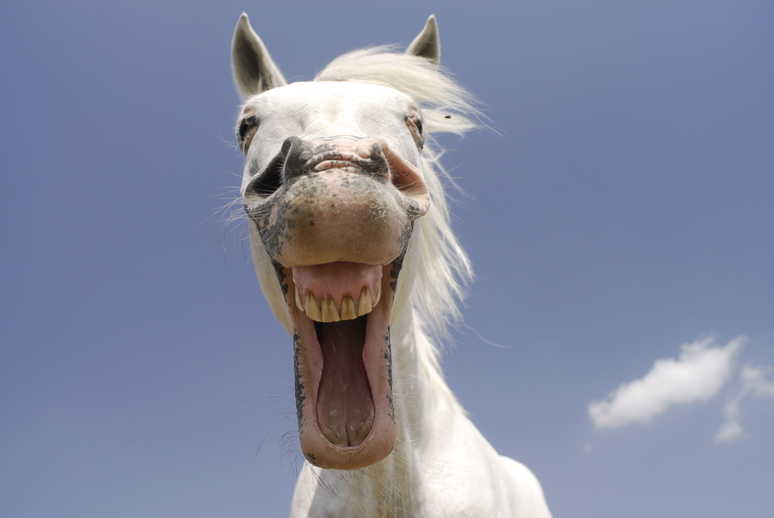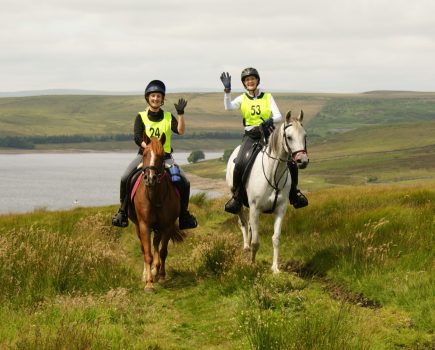There are many myths about horses – no doubt you’ve heard a few of them before, such as the rhyme about white hooves. We’ve gathered together a few of these head scratchers and picked out the truth from the tales.
Horses always sleep standing up
Horse can doze while standing up as they have a ‘stay mechanism’ that allows their muscles to relax without their bodies collapsing.
However, to enter REM sleep horses have to lie down. They need to do this for a couple of hours every four to five days as an absolute minimum. They will lie down more often when part of a herd, due to safety in numbers.
White hooves are weaker than dark hooves
People used to believe white horse hooves were weaker. As the old rhyme goes:
One white foot—buy him.
Two white feet—try him.
Three white feet—look well about him.
Four white feet—go without him.
When vets began using microscopes and X-rays it was found that the skin pigment of the hair at the coronary band determines the colour of the hoof, and that dark hooves and white hooves are no different in structure at all.
Horses only ‘talk’ to each other with neighs and whinnies
This is not, in fact, the only way horses communicate – they mostly ‘talk’ to each other through body language. Their large and mobile ears are great communicators, along with their facial expressions. Their eye direction is also key in directing attention, whether it’s towards prey or away from threat and danger.
Horses grow new teeth
A horse is born with all the teeth they will have during their lifetime. Most of their tooth structure is above the gum line, and as horses grind their teeth down on hay as they chew, the teeth descend and grow through as and when they’re needed.
Putting a mare in foal stops her getting laminitis
It was previously believed that pregnancy reduced a mare’s chances of getting laminitis, but vets now believe it can actually increase the risk due to the extra weight. Mares with a history of laminitis are at a greater risk of recurrence.
Horses should be fed at the same time everyday
We all know the fuss a horse can make when they’re expecting their feed; however, this horse myth may simply have arisen out of routine. Horses who are fed at specific times are bound to expect meals at certain intervals, but there is no real reason to stick to a regimented feeding schedule at all.
It is better to not pick out a horse’s feet during wet, muddy conditions as the mud that is already in the hoof keeps the foot dry
It’s important to clean out mud from the underside of your horse’s hooves. Lodged stones and small sticks can cause discomfort and bruising, and wet mud that remains in place will make the sole and frog damp resulting in the horn structures becoming soft. Cleaning out his feet also allows the hooves to be checked for any signs of injury or infection.
Hot and cold-blooded breeds have different body temperatures
The terms hot and cold blooded refer to the horse’s nature and type of horse, rather than their actual blood temperature. Historically, hot-blooded horses are generally bred for their speed, agility and intelligence. Cold-blooded horses are exclusively draft horses, being large, muscular and sturdy with a calm temperament. Warmbloods are crossbreeds of cold-blooded and hot-blooded horses.
Cold water is dangerous for horses
The origin of this myth is uncertain. Horses who drink cold water after exercising were believed to be at a greater risk of developing colic, laminitis and cramp. But it’s best to let your horse drink whenever he is thirsty. Horses out on a hack will happily drink cold water from a stream and many horses don’t suffer any ill effect from doing so.
Horses can laugh
We’ve all seen our horses make strange expressions by curling their lips and showing us their teeth with a wide grin, but it’s not because they’re enjoying a good joke – it’s actually part of a special nose-enhancing technique called the flehmen response. Horses pull these funny faces to direct scents in the air towards the olfactory glands, which are located at the end of their nasal passage. He’s actually just trying to figure out what you smell like.
Don’t miss the latest issue of Your Horse Magazine, jam-packed with training and veterinary advice, horse-care tips and the latest equestrian products available on shop shelves, on sale now.









